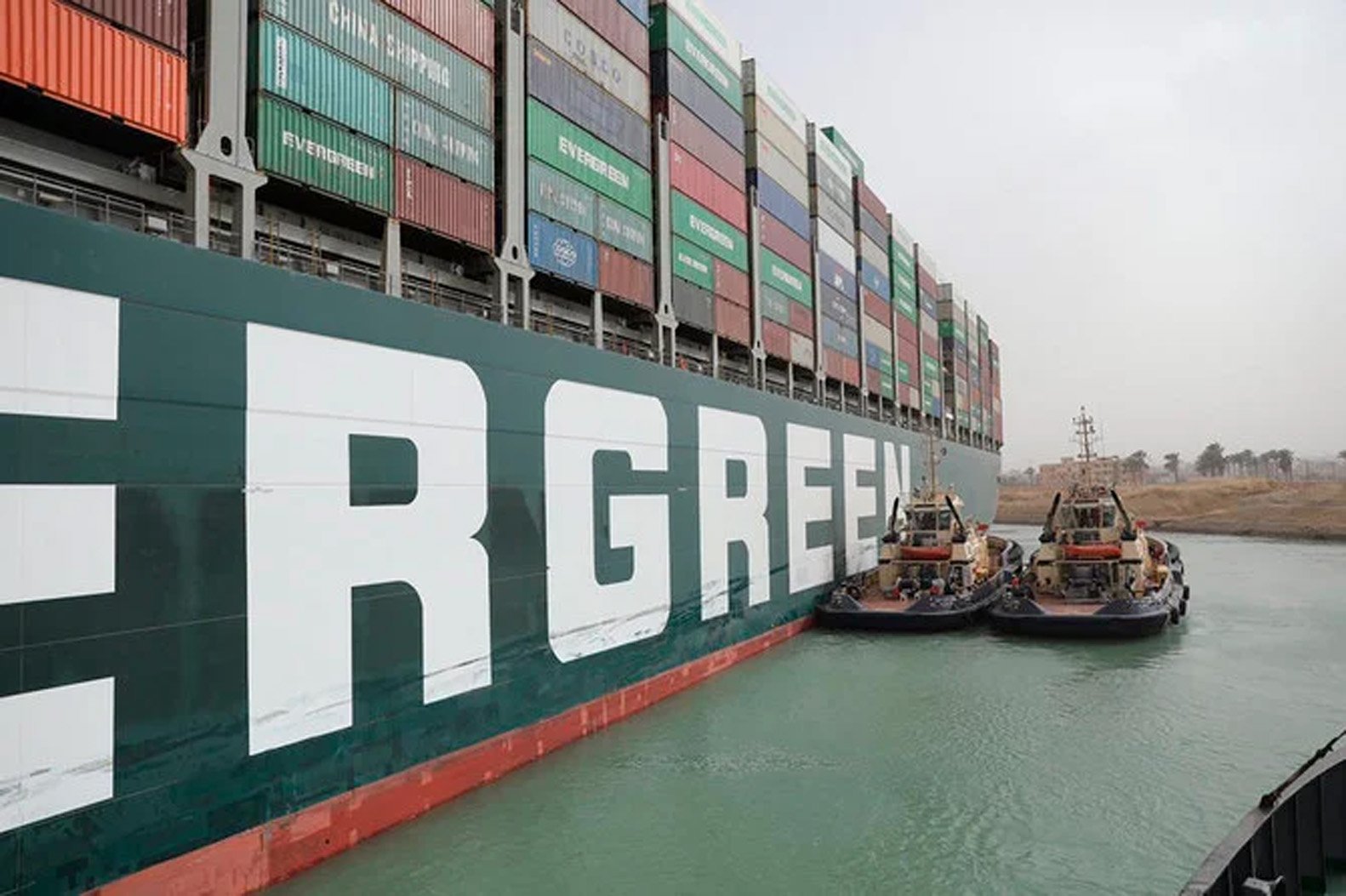The Ever Given is owned by Japan’s Shoei Kisen Kaisha and operated by Taiwanese firm Evergreen. Goods valuing around $10 billion pass through the canal every day, but the Ever Given alone is estimated to carry a load worth $1 billion, according to IHS Markit.
The canal has been in continuous operation since it was first inaugurated in 1869, with only the briefest interruptions between 1957 and 1958 when Egypt’s then-President Gamal Abdel Nasser nationalized the waterway and later between 1967 and 1973 due to the two Arab-Israeli wars. For the most part, the canal has operated without a hitch for the past 50 years or more. And if anything, its importance has grown in tandem with globalization, cementing the links between the Orient and the Occident. Therefore it comes as no surprise that this temporary impasse poses far greater issues than simply dislodging a stricken ship. The temporary closure of the Suez Canal highlights several problems pertaining to ship size, as well as the vulnerability of international waterways, global supply chains and imports.

Experts have removed thousands of tonnes of ballast and brought more tugboats in an expanding effort to refloat a massive cargo ship stuck diagonally across the Suez Canal and get international trade moving again on one of the world’s most vital shipping lanes.
Admiral Osama Rabieh, Chairman of the Suez Canal Authority, said that 9,000 tonnes of ballast water were pumped out of the ship to lighten the 200,000-tonne, 400-metre-vessel. Fourteen tugboats as well as dredgers are now part of the operation and they could look to unload some weight off the vessel if the current efforts are not successful, Adm Rabieh told a news conference.
These are from Japan’s Nippon Salvage and Smit International, a Dutch maritime salvage company founded more than 150 years ago that has recovered vessels following some of the worst disasters at sea.
 Gulf Frame
Gulf Frame
